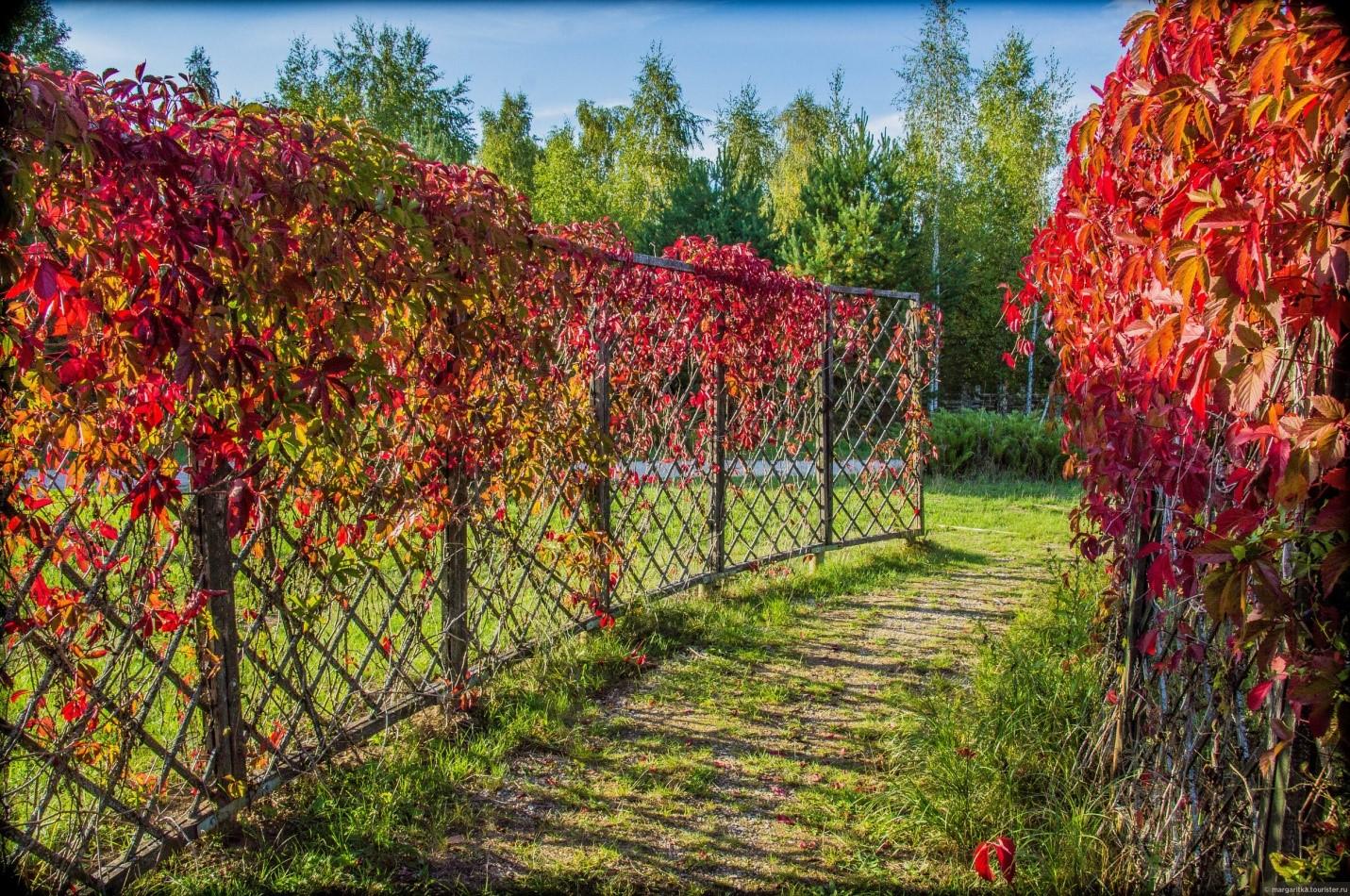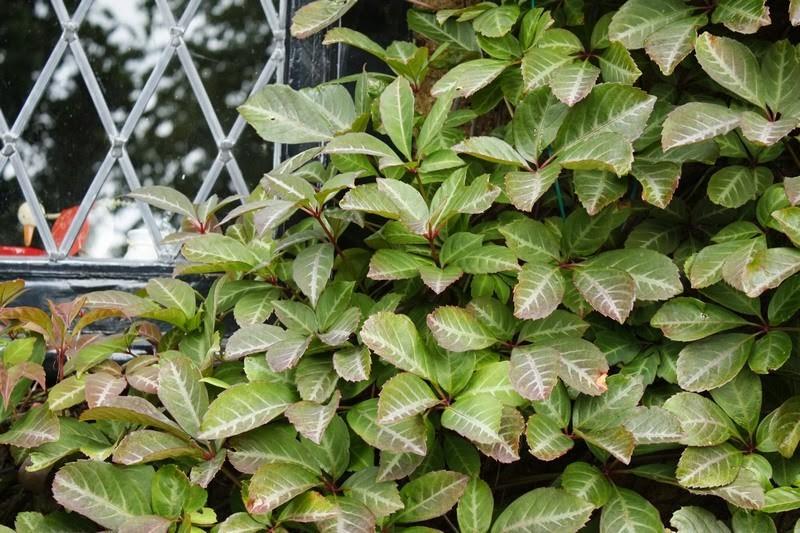Content
Wild grapes on a fence are a kind of decorative decoration that can be found in all corners of the country. The culture requires almost no care, which makes it a godsend for most gardeners. The landing deserves special attention. To make the site truly attractive, you need to become familiar with the propagation times, characteristics, varieties and methods of fastening wild grapes.
Variety selection
There is no big difference between the varieties. However, botanists identify several varieties used specifically for decorative purposes:
- Tripointed wild grape (Parthenocissus tricuspidata). The plant has been mentioned in literature since the mid-19th century. It is characterized by a dense arrangement of shoots, rapid growth and unpretentiousness. The variety is grown in different soils and climatic zones. It withstands air pollution, making landing in urban areas possible.
Flowering occurs in spring, berries are formed in autumn
- Wild Henry grape (Parthenocissus henryana). It is also not afraid of environmental contamination. Young stems are presented in the form of a tetrahedron. The length of the vine can reach from 17 to 23 m. The leaves are small in size.
The variety is great for planting along the fence
- Five-leaf wild grape (Parthenocissus quinquefolia). Another tall variety, suitable for planting near fences and hedges. In spring, the vine is decorated with numerous flowers. Small (up to 3 cm) foliage is closely adjacent to each other.
The fruits are dark blue
All varieties are resistant to cold weather and grow in different regions and countries.
How to plant maiden (wild) grapes along a fence in spring
Complications during the planting process may arise for beginners who have never gardened. However, even professionals need to take into account some nuances. The favorable period for reproduction is autumn. If the deadlines have been missed, planting maiden grapes along the fence is carried out in late spring.
The plant is placed in a pit fertilized with mineral and organic additives. Wild grapes should be kept away from apple and pear trees - such proximity can cause damage to the number of fruits.
It is not recommended to plant specimens two years old or older. Compared to one-year-old seedlings, they demonstrate a poor growth rate. The plant is kept away from other plantings at a distance of 200 cm.
The width and depth of the hole should be equal to one bayonet of a shovel.Crushed stone, sand or gravel is sprinkled on the bottom - a small layer of 4 cm is enough. Humus mixed with local soil is placed on the prepared base. The root collar is left on the surface. When planting wild grapes along a fence, the cuttings are placed at an angle, buried on 2-3 buds.
Finally, the soil is compacted. The presence of voids has a bad effect on root growth. Up to 10 liters of warm water are used for each seedling. Moisturize immediately after planting. To retain more moisture, wild grapes are fenced off with a fence of soil. You can also use mulch.

The culture adheres well to the fence even in windy weather
The young plant does not know how to cling to the fence. He is tied up with ropes. The gardener needs to control the direction of the branches to tightly cover the surface of the fence.
Methods for attaching branches
Maiden grapes are placed along various fences - a fence made of brick, metal, chain-link. They also decorate the walls. In the latter case, the direction is adjusted based on the location of the windows. Near them, the vines are pruned, tying the cut shoots together with the neighboring ones.
How to secure girlish grapes on a fence
The crop grows at an amazing rate, especially if the vine touches the ground. Since the roots are shallow, they do not undermine the fence supports. But the integrity of the metal mesh may be damaged. Therefore, adjustments to the shoots are necessary.

Fasten with any available material - elastic band, lace or rope
You should cut them in armfuls - over the summer the wild grapes will make up for it.To reduce hassle, gardeners recommend placing seedlings at a distance. If the owner needs to get new shoots, then the stems are spread on the ground.
How to make a hedge from virgin grapes
Using wild grapes, it is easy to decorate a fence, and the operations are performed with your own hands. The plant also forms a full-fledged hedge, which allows you to hide noticeable areas from view.

To create a hedge you need supports - trellises
As practice shows, already two years after planting, neighboring grape shoots are woven into a single fence. The formation is carried out with pruning shears at a level of 1 m. The lateral shoots are given direction by tying them to additional supports. They are left until they become stiff.
How quickly do maiden grapes grow along a fence?
In spring, the growth of wild grapes is accelerated, which is associated with the beginning of the growing season. In one season, the crop adds up to 90-120 cm. Mature plantings develop more slowly - they reach the same figure in a year.
There are usually no problems with rooting along the fence. Regardless of the time of planting - winter or autumn - the bush has time to adapt to frost. In the first case, the seeds are hardened in the refrigerator, in the latter this is not required.
How to care for wild grapes on a fence
The shoots grow well in the wild, so almost no care is required from the owner. To maintain the decorative appearance of the fence, you should control pruning and watering frequency. These are the most important aspects.
Trimming and shaping
Gardeners do not attach importance to pruning young vines. Meanwhile, the procedure helps to organize the correct form.Wild grapes have a habit of curling and therefore need some kind of support. It can be a brick, wooden, or metal fence.
The bush clings to mesh, rough wood and even plastic. The shoots that have started to grow are directed in the direction where it is necessary to close the gap.

Sometimes the stems do not obey even after formative pruning, then they are simply removed
Summer cottage plots are more difficult to care for, since the opportunity to travel outside the city is not always presented. A situation often arises when, after a few months, the owner comes to the garden and cannot recognize it: the vine has grown so large that it has destroyed other plants, filled the yard and left no passage for movement. In advanced cases, wild grapes are harvested using machinery.
Watering
Young seedlings are watered frequently; adults receive sufficient rainfall. But during drought, wild grapes are definitely moistened - 20 liters per bush. In other seasons, 10 liters is enough. After irrigation, weeds are removed, which take away the strength of the crop. The optimal interval between waterings is one month.
Top dressing
Fertilizer applied during planting lasts for a long time. Subsequent feeding is carried out when the vine reaches the age of four years. The primary additive is nitroammophoska. It is used in the summer. After a month, fertilize with peat or compost mixture.
Wintering
In winter, wild grapes on the fence require shelter. However, in the southern regions it is not necessary to do this - the bush tolerates frosts down to -24 degrees.Since the vine does not lie under the snow, but is on a support, it freezes faster. The owner needs to remove all the shoots from the fence and place them in one place, tying the stems, and cover the bunch with spruce branches or non-woven material.
Reproduction methods
The most basic way is to take the stem and cut it to 20 cm. The stalk should be cleared of stepsons and tendrils and placed in water until roots appear.

After transplantation, the temporary roots will disappear - new, stronger ones will grow in their place.
Wild grapes for hedges can be planted with seeds; spring is the most suitable period for this. The development process is not as fast as in the case of cuttings, but subsequently the berries and vines will have a larger diameter.
The wild plant is also propagated by layering. They are pinned in April and separated in October. This method is suitable for those who rarely go to the country. The lash is not divided or cut off. You need to find a strong branch and lower it to the soil, bury it slightly so that it holds well.
Conclusion
Wild grapes on a fence form a hedge in 2-3 years. It is undemanding to planting and care. When it reaches one year, the culture can be propagated to, for example, decorate the walls of a house. It should be remembered: the berries are poisonous, they should not be eaten and, especially, left near the plantings of small children.
Reviews of hedges made from virgin grapes











